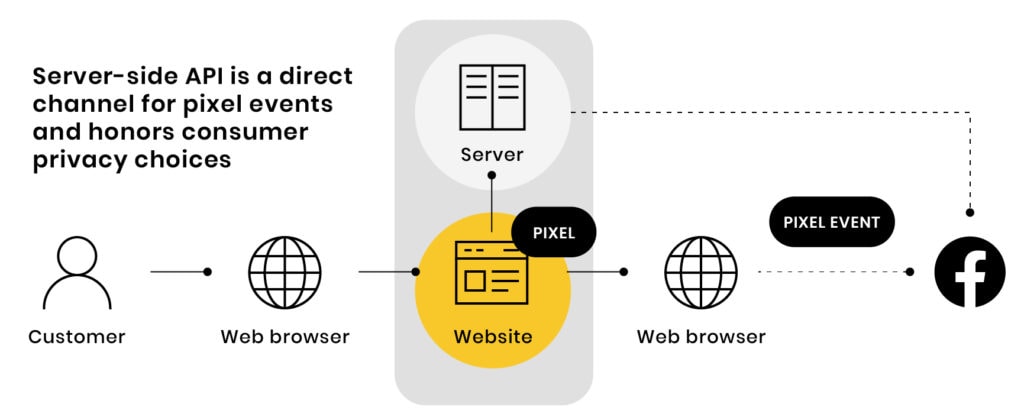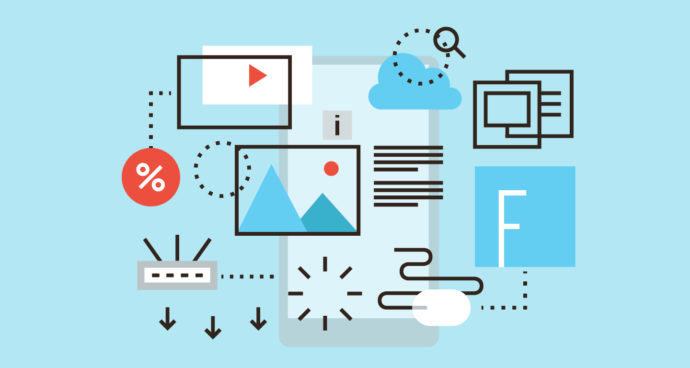It All Started With A Pixel
In 2021, there shouldn’t be a marketer or strategist who hasn’t heard of or used the Facebook Pixel in some way, shape or form. It forms the backbone of any successful paid social campaign. It allows us, as performance marketers, to closely monitor campaign performance based on on-site actions that users have taken – whether that be a product view, an add-to-cart, a lead submission or a purchase (to name a few!).
The Privacy Landscape
Before we move into a bit more about Conversions API, let’s take a step back and look at the digital marketing landscape and what has led us up to where we are now in 2021. You may remember something called ITP (Intelligent Tracking Protocol) rolling out in 2017 across Apple’s Safari, a feature that protects privacy and prevents users from being tracked across websites.
Naturally, Google and Facebook found ways around this by refreshing cookies on a more regular basis. Since its launch in 2017, it has undergone several updates to reduce these workarounds and tighten privacy. Firefox and Google both jumped into the ITP world with their own versions of these privacy measures, and more recently, Google announced that they would be deleting support for 3rd party cookies by 2023.
As we move deeper into this “cookieless” world, the conversations turn to how advertisers mitigate these risks as our ability to track users less and less.
With this at the forefront of our mind, we need to ensure whatever data we can track is as accurate as possible, and this is where the Facebook Conversions API steps in – Facebook’s server-side tracking implementation.
It’s important to note this shouldn’t be confused as a workaround to the tracking limitations presented by the recent iOS14 update. It’s a means of adding another layer of reliability to what we can still track. Plus, it works alongside your Facebook Pixel instead of replacing it.
How does Conversion API work?
In essence, the Conversions API allows you to send web events from your website directly to Facebook without the need to go via a browser.

Compare that to a standard Pixel implementation where data is sent from a website to your browser and then back to Facebook’s servers. Whilst primarily accurate, this method can present several issues from a tracking and accuracy perspective. Ad blockers can prevent the pixel from loading, poor website load times, and dodgy network connections can all impact the pixel actually being loaded and therefore working. But with the Conversions API, we remove a high percentage of any of these potential pitfalls.
As stated earlier, the Conversions API should be viewed as an extra level of accuracy and tracking on top of your standard Pixel implementation. “But what if both my pixel and the API track the same user who makes a purchase? Won’t it double count?” The answer is no, it won’t. Facebook has already built a deduplication process, so that pixel and API events don’t double count.
Is Conversions API difficult to set up?
Usually, any mention of an API integration would make you run for the hills – and I’m not going to lie, in years gone by, something like this would have been a nightmare to implement. But in recent years, Facebook and other providers have gotten a lot better at streamlining the setup process. In fact, if your website is built on Shopify, it’s a simple one-button click to activate.
Facebook has a lot of out-of-the-box integrations which have setup instructions based on your platform of choice.
If you’re running a bespoke or custom website backend, we’d recommend speaking to your web developers to get more information on how the setup process will work. You can find instructions and reference documentation using this link.
Is it really necessary?
In a nutshell, not right now. You can carry on using the standard Facebook Pixel, and your campaigns will still keep running as expected. If you want to obtain a deeper understanding of what actions users are taking on your website and most likely pick up actions/conversions that may have been missed due to browser-side blocking, then it should be high on your list of priorities to implement. It’s definitely a conversation we’re having with all of our clients at the moment.
